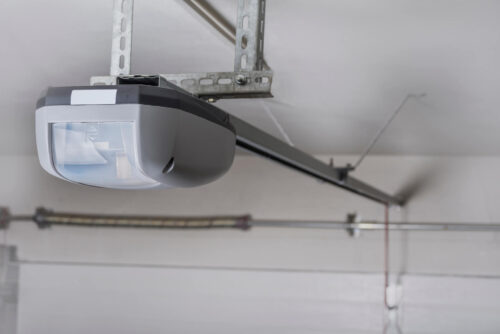Understanding the power consumption of household appliances can help homeowners make informed decisions about energy efficiency and cost management. Garage door openers are often overlooked in discussions about energy savings. This article explores how much power a garage door opener uses, factors that affect its energy consumption, and tips for reducing its impact on your electricity bill.
Understanding Garage Door Opener Power Use
A garage door opener is a motorized device that opens and closes garage doors controlled by switches on the garage wall. Most homeowners use their garage door openers daily, yet few are aware of the amount of energy consumed by these devices.
Average Power Consumption
Typically, garage door openers use about 350-600 watts of power during operation, but this can vary based on the model and efficiency of the device. To put this into perspective, this is roughly the same amount of power used by a standard desktop computer.

Standby Power Draw
In addition to the power used while operating, garage door openers also consume electricity when not in active use. Known as standby power, this can add up, especially with older models. Newer, more energy-efficient models tend to have a lower standby power consumption, sometimes as little as 1 watt.
Factors Affecting Garage Door Opener Power Consumption
- Motor Type: AC motors are commonly used in older models and generally consume more power compared to the more efficient DC motors found in newer models.
- Door Weight and Size: Heavier garage doors require more power to operate, which can increase energy consumption.
- Maintenance: Poorly maintained garage door mechanisms may cause the opener to work harder, thus consuming more power.
Calculating Your Garage Door Opener ’s Energy Use
To understand how much your garage door opener is impacting your energy bill, you can calculate its energy use with the following formula:
Energy (kWh)=Power (kW)×Hours of operation per day×Days per year
For example, if your garage door opener uses 0.5 kW and operates 5 minutes per day:
0.5 kW×(5 min/day / 60 min/hour)×365 days/year=15.21 kWh/year
Cost Implications
Using the average electricity cost of about 13 cents per kWh, the annual cost to operate a typical garage door opener would be approximately $1.98 per year. This cost will vary based on local electricity rates and the specific usage pattern of your garage door opener.
Long-Term Savings from Modern Garage Door Opener
Investing in a modern garage door opener is not just about upgrading to a new piece of technology; it’s a strategic move towards long-term energy efficiency and cost savings. The integration of advanced features like energy-efficient motors and standby power reduction technologies significantly decreases the power consumption of these devices, which can translate to noticeable savings on your energy bills over the lifespan of the unit.
1. Energy-Efficient Motors
Modern door openers are often equipped with DC motors, which are not only more energy-efficient than the traditional AC motors but also provide smoother and quieter operation. DC motors typically use up to 30% less energy, which can substantially lower the operational costs when calculated over the years of use. This type of motor is especially beneficial for families who use their garage door as the primary means of entering the home, resulting in frequent daily use.
2. Standby Power Reduction
The standby power—energy used while the device is not actively operating but is still turned on—can be a hidden source of energy drain. New garage door openers include features that minimize this power draw when the unit is not in use. For example, some models are designed to use less than one watt of power in standby mode, compared to older units that may use 5 watts or more for the same. Over time, this reduction in standby consumption can lead to substantial energy savings.
3. Enhanced Durability and Maintenance
Modern garage door openers are designed not only for efficiency but also for durability. They often require less maintenance than older models, which means fewer calls to technicians for repairs and fewer replacements of parts or even entire systems. This reliability can further reduce the long-term costs associated with the upkeep of your garage door system.
4. Added Convenience and Security Features
Aside from the economic benefits, modern door openers offer enhanced security features such as rolling codes, which change the opener’s remote code after every use, preventing unauthorized access. Additionally, built-in Wi-Fi and smartphone connectivity allow homeowners to monitor and control their garage doors remotely, adding a layer of security and convenience. These features, while providing peace of mind, also contribute to the property’s value—a consideration for future resale.
5. Contribution to Property Value
Upgrading to an advanced garage door opener can enhance the overall appeal and functionality of a property, making it more attractive to potential buyers. Homes with smart, energy-efficient technologies often command higher market prices, meaning the investment in a modern opener could pay off in terms of increased property value.
Why Choose Radford Garage Doors & Gates To Upgrade your Garage Door Opener
While garage door openers are not the largest consumers of energy in most homes, their impact on your energy bill is not negligible, especially if the unit is older or poorly maintained. By understanding the factors that affect a garage door opener’s energy use and taking steps to minimize power consumption, homeowners can enjoy the benefits of convenience and security without incurring high energy costs. Radford Garage Doors & Gates provides high-quality, energy-efficient garage door solutions that help homeowners save energy and reduce their environmental footprint.

San Diego:
9185 Chesapeake Dr.
San Diego, CA 92123
(858) 925-2700
Mission Viejo:
27281 Las Ramblas, Suite 200,
Mission Viejo, CA 92691
(949) 749-7665
Email:
info@radforddoors.com
Google Rating
4.9